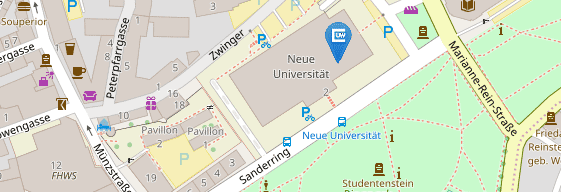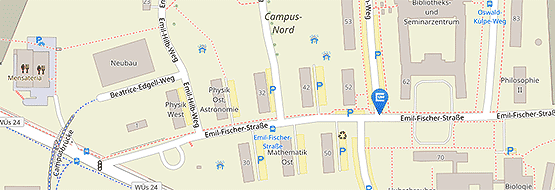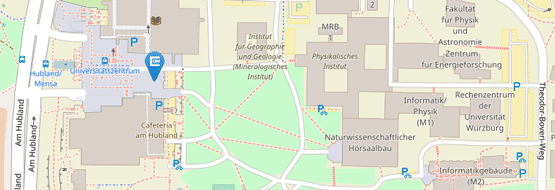Hardware - our contribution
Muon spectrometer
The muon spectrometer is a viat part of the ATLAS detector and consists of gaseous sub-detectors of different technologies for triggering and precise tracking of incident particles. There, approximately 350,000 drift tubes constitute around 1,200 precision tracking chambers of the MDT (Monitored Drift Tubes) sub-detector, to achieve position accuracy of 50 micrometres needed for the track reconstruction under the magnetic field. A series of studies are being carried out to optimise the performance of the MDT. In particular, the efficiency and resolution of the track reconstruction is currently being checked and improved.
In order to be equipped for the even higher luminosities of the LHC in the future, some parts of the muon spectrometer have been replaced as part of an ATLAS detector upgrade. The Würzburg working group contributed to the New Small Wheel (NSW) upgrade project and was involved in the preparation, development and production of new MicroMegas gaseous detectors for the NSW. Since April 2022, muons have been detected at high rates and precisly measured with the New Small Wheel, also thanks to researchers from Würzburg.
We continue to contribute to the improvement of the ATLAS detector. We are involved in the phase 2 upgrade of the MDT detector. The aim is to prepare the detector for the upcoming high-luminosity upgrade of the LHC, which will take place between 2026 and 2030. We are involved in the development and testing of new front-end electronic boards of the data readout system of the MDT. For this, we have developed a hardware tester tool to analyse the performance and quality of prototypes of the new boards, which has helped to improve their final design and characteristics. The tool is being used in conjunction with in-house developed software to test an certify the new front-end electronic boards (approximately 19,000 units), ensuring the high quality throughout the production process.
Data analysis - important research questions
Mass of the W boson
The mass of the W boson can either be measured directly or predicted from other measured variables. Since the latter method is currently more accurate, a precise direct measurement and its comparison with the predictions based on the Standard Model will more accurately test the Standard Model. One difficulty with the measurement is that a neutrino produced in the decay process can only be detected indirectly from the rest of particles measured in the detector.
Achieving the required accuracy in the per mille range is a major challenge, which we are actively working on in Würzburg.
Top quark
Precision is also important when analysing processes involving top quarks. The top quark is the heaviest known subatomic particle and is analysed using its decay products. Top quarks can be produced in pairs, individually or even in threes or fours. The final states from the decay can also be accompanied by other particles, e.g. the bottom quark or leptons. The aim of analysing such final states is to better probe the large coupling of the top quark to the Higgs boson and to search for possible heavier particles that could decay into top quarks. If the top quarks are produced from the decay of heavier particles, their energy and momentum distributions will differ from the Standard Model predictions, providing evidence of physics beyond the Standard Model.
Electroweak gauge bosons
One of the important and unique tasks of the ATLAS experiment is to experimentally test the electroweak gauge theory of the Standard Model. This involves measurements of scattering processes involving the electroweak gauge vector bosons (W, Z and photon), known as vector boson scattering (VBS). The VBS plays a particularly important role in the predictions of the self-interactions (gauge couplings) of vector bosons. When two protons smash into each other, they can each emit a electroweak gauge boson, which interact with each other and produce two new electroweak gauge bosons. These VBS processes are ideal for investigating the self-couplings between the gauge bosons and searches the possible deviations from the Standard Model predictionsdu to possible new physics effects.
In Würzburg, we are strongly involved in the studies of the electroweak VBS process at the ATLAS Detector. We have been contributing to the ATLAS measurement of the VBS production of W and photon in the leptonically decaying W final states. Further studies of other VBS processes and in general , processes involving multi-boson interactions are in progress.







